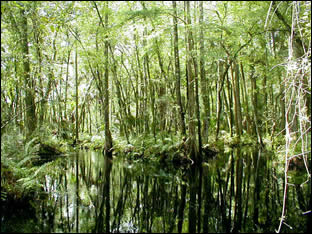Services
What We Provide
Brownfields
What are Brownfields?
 On January 11, 2002, President Bush signed into law the Small Business Liability Relief and Brownfields Revitalization Act (Brownfields Law). The Brownfields Law includes provisions to establish, enhance and, empower tribal response programs which
will play a critical role in the successful cleanup and revitalization of Brownfield sites. A “Brownfield” is defined by the United States Environmental Protection Agency (EPA) as “real property, the expansion, redevelopment, or
reuse of which may be complicated by the presence or potential presence of hazardous substances, pollutant or contaminants.” The purpose of the Brownfields Program is to encourage re-development at these properties.
On January 11, 2002, President Bush signed into law the Small Business Liability Relief and Brownfields Revitalization Act (Brownfields Law). The Brownfields Law includes provisions to establish, enhance and, empower tribal response programs which
will play a critical role in the successful cleanup and revitalization of Brownfield sites. A “Brownfield” is defined by the United States Environmental Protection Agency (EPA) as “real property, the expansion, redevelopment, or
reuse of which may be complicated by the presence or potential presence of hazardous substances, pollutant or contaminants.” The purpose of the Brownfields Program is to encourage re-development at these properties.
Cleanup and revitalization is accomplished through co-operations between the Seminole Tribe of Florida (STOF) and its members, state and federal agencies, and the enhancement of the Tribal Response Program (TRP). The EPA, in correlation with the STOF Environmental Resource Management Department (ERMD), work together to conduct Targeted Brownfield Assessments and establish a solid Brownfields Tribal Response Program.
The Seminole Brownfields Program
The Seminole TRP was established in October of 2003 and is responsible for investigating, assessing and coordinating the remediation of hazardous and non-hazardous materials on all Tribal Lands. The TRP protects the surface water, groundwater, soil, sediment, wetlands and wildlife habitat and other environmental resources that may be subject to potential contamination as a result of industrial and agricultural land uses. In compliance with funding requirements for a TRP, the STOF ERMD, strives to achieve the four (4) elements of a response program:
- Timely survey and inventory of Brownfield Sites
- Oversight and enforcement authorities or other mechanisms and resources
- Mechanisms and resources to provide meaningful opportunities for public participation
- Mechanisms for approval of a cleanup plan and verification and certification that cleanup is complete
The ERMD in correlation with the EPA’s Brownfields Initiative work together in a timely manner to prevent, assess, safely clean-up and redevelop Brownfields. These tasks include identifying Brownfields within the reservation boundaries and providing guidance and compliance for approval of a clean-up plan. Community involvement of Brownfield sites are enabled by establishing a public record and providing opportunities for public participation.
Currently, the ERMD acts as a public forum for any environmental issues affecting the STOF members and surrounding neighbors. The STOF ERMD is continually striving to manage any contamination on tribal lands through TRP procedures. Some of the work administered by ERMD entails testing, monitoring and removal of contaminated water and soil. Other work is aimed towards the prevention of such pollution. The TRP work includes, but is not limited to, the following:
- Educating Tribal Departments and community members on proper storage, disposal and reduction of harmful chemicals
- Scheduling and management of non-hazardous and hazardous waste disposal
- Emergency response planning, training, and management
- National Pollutant Discharge Elimination System (NPDES) permit compliance, petroleum storage system compliance, and Spill Prevention, Control and Countermeasure (SPCC) plan compliance
- Identification, assessment and remediation of sites with impacted media
- Data management
- Distribution of acquired data within other Tribal Departments and coordination with those departments using this data for land use planning
- National Environmental Policy Act Compliance
- Assisting the Tribal Council with developing environmental policy
- Assisting the Tribal Water Commission with environmental policy management, Water Code Enforcement and continued Ordinance development
- Training of Tribal personnel in environmental policy, emergency response, and enforcement, and professional development of ERMD staff
The work plan for the STOF’s TRP for fiscal year 2015 continues the development and enhancement of a Tribal environmental response program of Fiscal Year 2014. As in fiscal year 2014, the STOF and its ERMD will continue to include the four (4) elements of a response program.